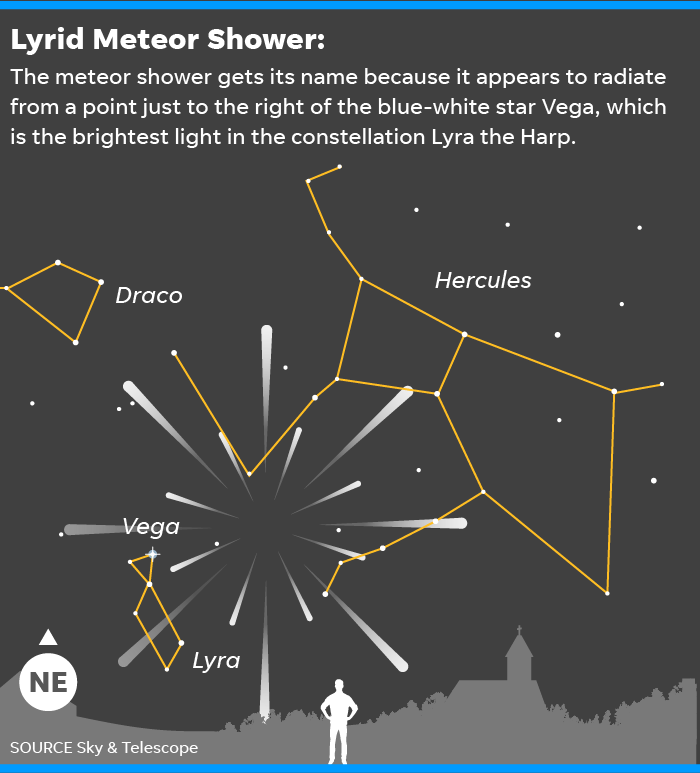The Lyrids meteor shower returns this month. Here’s how to watch in Knoxville
Look up toward the night sky and take in one of the year’s first meteor showers. Although the recent “planetary parade” was slightly underwhelming, the next celestial event might be worth spending some time gazing into the galaxy.
The Lyrids meteor shower is making its annual appearance beginning April 15, and can be seen for two weeks, until April 29. The beloved meteor shower has been observed for 2,700 years and is one of the oldest known meteor showers, according to NASA.
What is the Lyrids meteor shower?
The Lyrids are pieces of debris from the Comet C/1861 G1 Thatcher, and the shower appears each April.
The Lyrids are described as "medium strength shower” by the American Meteor Society.
Its meteors are few but are fast and bright.
The Lyrids' radiant, or the point in the sky from which a meteor shower appears to come, is near the constellation Lyra, according to NASA.
The meteors typically appear near the constellation's brightest star, Vega.
What is the best time to see the Lyrids meteor shower in Knoxville?
The Lyrid meteors are best viewed after moonset and before dawn, according to NASA.
The peak nights to see the shower will be April 21, 22 and 23, the University of Tennessee’s astronomy outreach liaison Paul Lewis told Knox News.
The moonsets in Knoxville for those nights respectively are 10:12 p.m., 11:18 p.m., and just after midnight, according to the Farmers' Almanac.
“The shower is one of the shorter showers. Typically, we say that you could expect to see meteors associated with any given shower for as much as a week, sometimes two,” Lewis said. “But this one isn't spread out like that. We see this over a matter of days, up to just shy of a week.”

How to observe the Lyrids shower in Knoxville
To spot the showers clearly, NASA recommends staying away from city light.
Lie flat on your back and look up.
Take in as much of the sky as possible because they can appear from any direction.
Lewis advises viewers to be patient and persistent when gazing for Lyrid meteors.
While some showers can have up to 100 meteors an hour, expect to only see 10 to 20 with this year’s Lyrids event, NASA notes.
What is a meteor shower?
Meteors are pieces of space debris from comets and asteroids that interact with our atmosphere at high speeds and burn up, according to NASA. Meteors are sometimes called “shooting stars.”
Meteor showers occur annually as the Earth passes through the trail of dusty debris left by a comet.
Meteor showers usually are named after a star or constellation that is close to where the meteors appear in the sky, NASA notes.
When will the next big meteor shower event be?
A meteor shower bigger than Lyrids will occur in August, Lewis said.
The Perseids are the most popular meteor shower, according to the American Meteor Society. Typically, 50-75 meteors an hour can be seen during this event.
Peak viewing nights are expected to be Aug. 12 and 13.
Devarrick Turner is a trending news reporter. Email devarrick.turner@knoxnews.com. Twitter @dturner1208.
Support strong local journalism by subscribing at knoxnews.com/subscribe.
This article originally appeared on Knoxville News Sentinel: How and when to watch the Lyrids meteor shower in Knoxville

